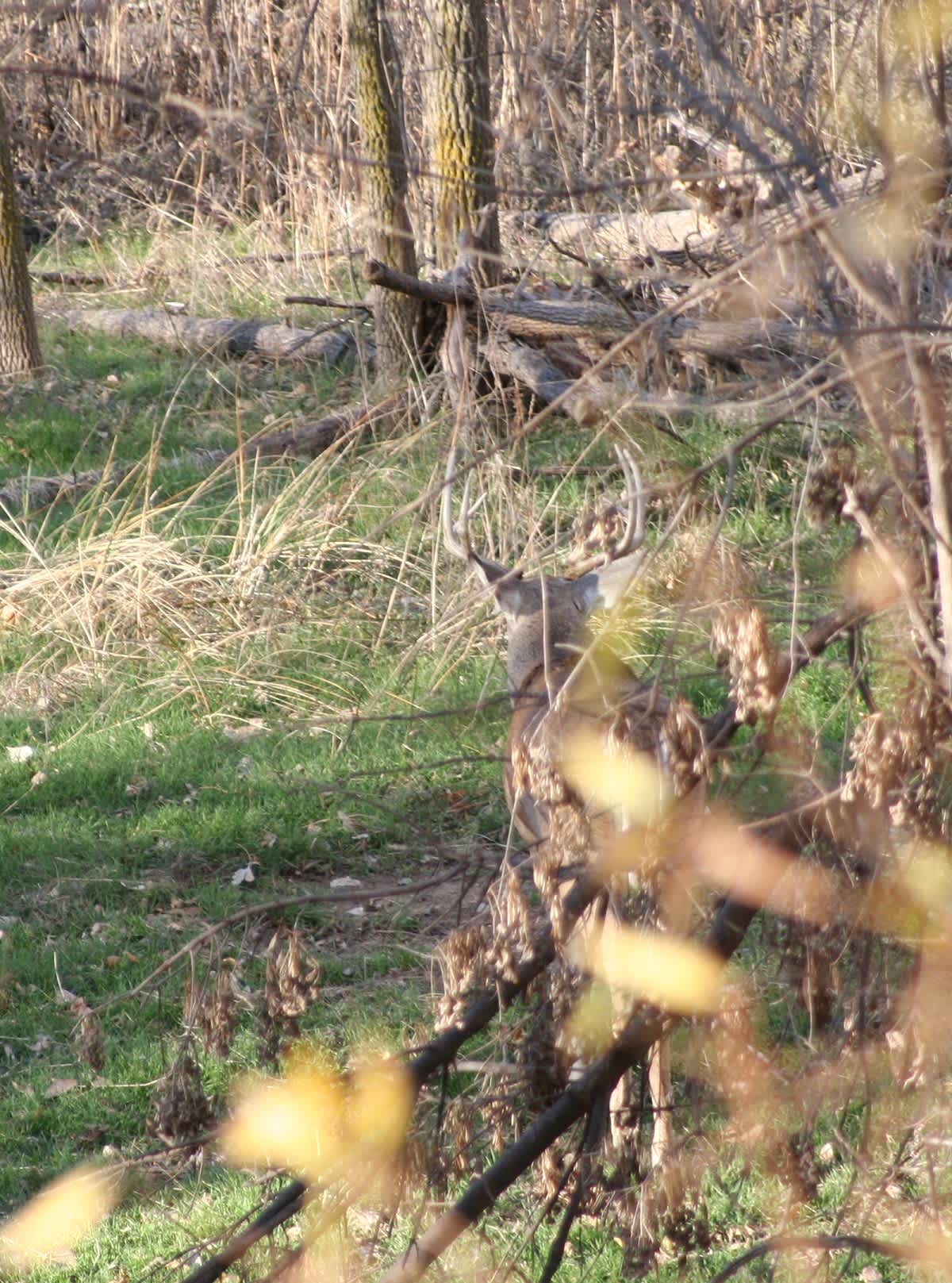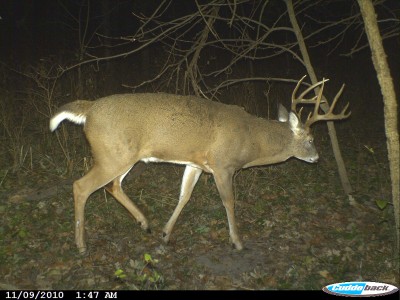Bump and Hunt
Bernie Barringer 11.12.13

This unconventional tactic might just be the strategy you need to bag that nocturnal buck.
It was early in my career as a serious whitetail bowhunter and I was checking out some public land in northern Missouri. It was the first time I had hunted in that state and I was just figuring the game out. I picked a good-looking spot, loaded my stand and all my gear on my back, and headed out into the woods. When I came across a thick area, I found a group of scrapes and rubs and saw the flash of a white tail as a deer quietly bolted out of the area, threading his way through the trees. I decided it would be a good place to set up.
I set up my treestand and settled in for the five-hour wait until dark. About two hours later, I heard a buck snort really close. I had been winded. I quickly turned just in time to see a huge buck disappear into the brush. His rack was wider than his butt and I knew he was one of the largest bucks I had ever seen in the wild.
Suddenly I realized what had just happened. I had busted that buck out of his sanctuary, and he came sneaking back in with the wind in his face, assuming that whatever had spooked him would be gone. I began to wonder if I could actually use what I learned from this experience to my advantage, and over the years, I have.
Some mature bucks have the game figured out. You may know of one who rarely ventures out of his sanctuary during daylight, and he won’t be caught chasing does in open areas during the rut. You have scouting camera pictures of him but you’ve never seen him in person. He has become almost unkillable by legal means. This buck has a bedding sanctuary that he trusts to keep him concealed. If you have an idea where he beds during the day, you have an option. It’s a late-season long shot—a swing for the fences, so to speak—but it sometimes pays off in a big way. Carefully move into the sanctuary and bump the buck out of his bed, then set up a treestand and waylay him when he returns.
A mature buck’s bedding sanctuary is likely to be thick and very difficult to penetrate without spooking him. He has chosen this spot for specific reasons: he can use his senses of sight, smell, and hearing to detect danger approaching from any direction. If he detects danger, he will move off. Most times he will return within two hours. This tactic is most successful if done during the middle of the day.

Bring your hunting equipment with you so you are ready to hunt. Carefully sneak into the sanctuary from the downwind side. Take your time, move quietly, and use good binoculars to glass often as you move. He is likely to be in the thickest, most impenetrable spot within the area. When he becomes aware of you, he may sneak off or he may crash off, depending on how close you are when he detects you. Ideally you want to see him move off. The more spooked he is, the less likely he will come back that day.
Once you have bumped him, spend at least 15 minutes carefully analyzing the immediate area. Find out where exactly he beds and where he moves around within the sanctuary, and analyze all trails that enter the sanctuary. What direction are the tracks leading? On which sides of the trees are the rubs? Gain confidence in knowing the exact spot he will return to bed.
When the buck returns, he will circle 75 to 100 yards downwind of the bedding area to scent-check the area before entering. Then he will enter the bedding area on a trail with the wind in his face. Choose a trail that allows you to set up using this knowledge. You must position yourself to play the wind angle so you are not upwind of the buck when he circles downwind of the bedding area. Do your best to predict which way he will come in. Choose the exact right tree and get your treestand up as quickly but quietly as possible. When he comes back he will be on edge and moving with meticulous caution. You must be in the right place and very well-concealed.
This tactic is a long shot that is best reserved for late in the season when all other possibilities have been exhausted. It has by far the best chance of succeeding on the first try. If you do everything right, you may just kill the unkillable buck.
Follow Bernie’s bowhunting adventures on his blog, bowhuntingroad.com.

